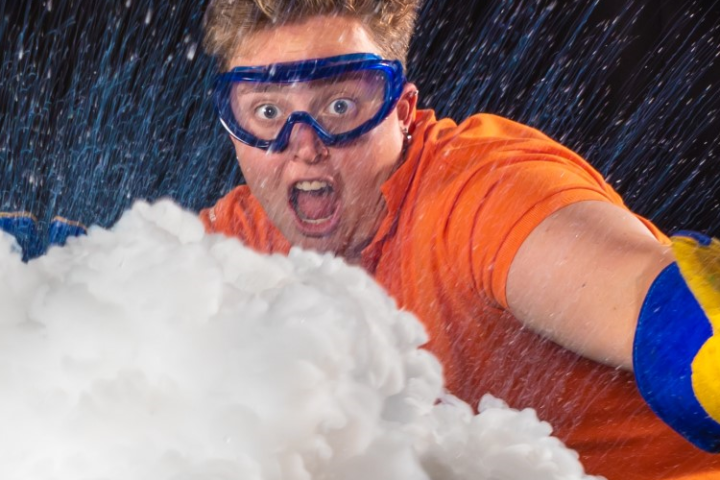
Enter a dark and dangerous world of giant sea creatures and bizarre fish as you journey below the waves to discover what lies beneath in Deep Oceans.
Fierce predators with eyes the size of dinner plates, glowing lights that lure you in and fish with teeth so big they don’t fit inside their mouths are all on display in Deep Oceans – a joint exhibition between Questacon – The National Science and Technology Centre and the Australian Museum.
For hundreds of years scientists have pieced together tantalising clues from the depths of the ocean: a huge tentacle that was washed ashore, a glimpse of a long serpentine body. Our imaginations have filled in the gaps which have led to the monsters coming to life in drawings, movies and novels. Often the line between fact and fiction is blurred, leading to the question—do sea monsters really exist?
Scientists have been able to unlock some of the mystery surrounding what lives deep below the seas surface through the use of deep sea exploration technology such as Remotely Operated Vehicles (ROVs) but there is still so much more to learn.
Acting General Manager of Programs, Dr Stuart Kohlhagen, said the Deep Oceans exhibition enables visitors to unlock the mysteries of the deep and discover the largest habitat on earth.
“The deep ocean makes up over 95% of the living space on Earth yet less than 10% of it has been explored. This exhibition uniquely combines hands-on interactive exhibits with real specimens. From discovering the importance of Whale Fall to experiencing first-hand what it feels like to descend to the deep through the Pressure Cushion Squeezer there is something for everyone,” Dr Kohlhagen said.
Also on display is a full scale replica of the submersible, The Bathysphere. During the 1930s The Bathysphere conducted a series of dives to the ocean floor proving that life really did exist at great depths. Visitors will be able to climb on board and experience first-hand audio accounts of one of The Bathysphere’s first dives.
Deep Oceans is now open at Questacon – The National Science Centre and will close on Thursday 31 October 2013.
Media contact: Michelle Canning, Marketing Manager Ph: 0418 819 354.



